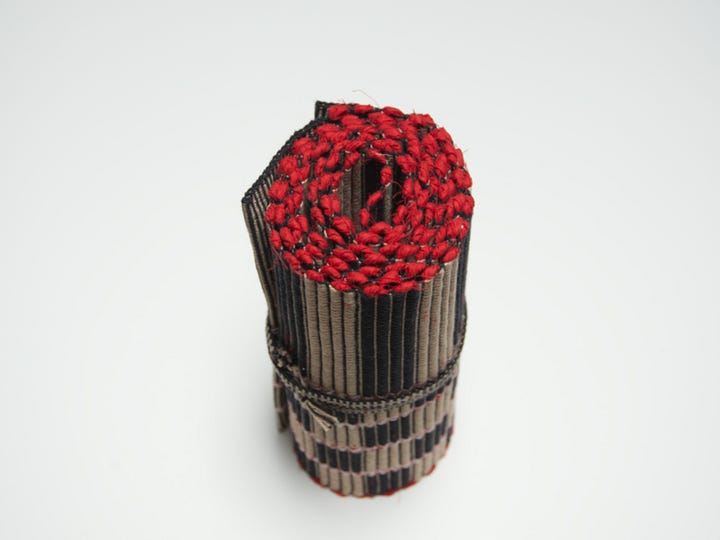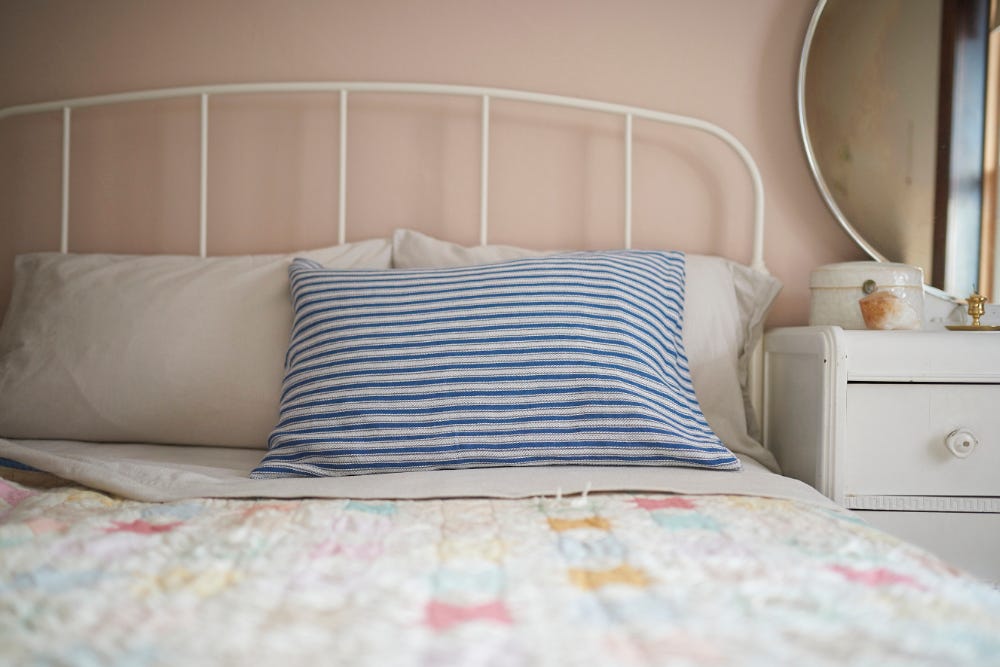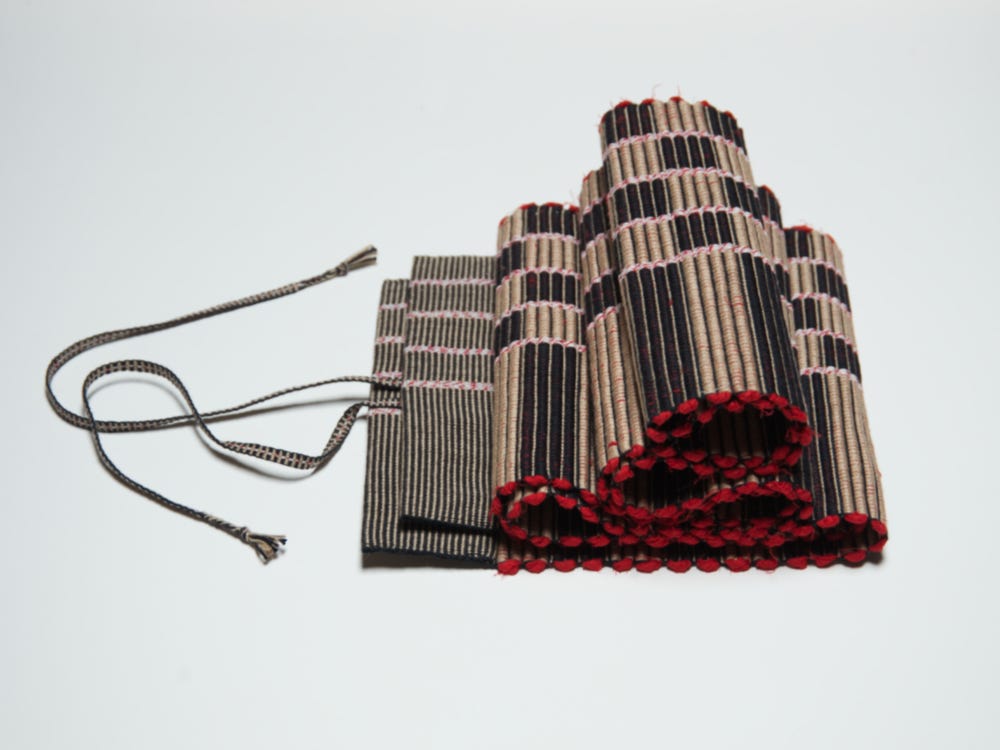In this newsletter you’ll find:
New pattern! The Heavy Linen Pillowcase
Studio Views
Interview with Alan Oliver
Heavy Linen Pillowcase
I dug through the archive this past month and decided I may as well publish a pattern I made, wrote up, and have been enthusiastically using for the past two years (!). You can find the Heavy Linen Pillowcase on my website now.
Many years ago in VÄV Magasinet there was an article about someone who had woven their entire set of bed linens: sheets, pillowcase and all. This has always sounded like a dream project to me (I mean, hand woven sheets!), so I thought I would start with the smallest and most straightforward piece I would need: a pillowcase.


I wanted it to look like an old Ikea mattress cover I had as a child: blue stripes on a white background. I chose 2/16 Bockens Linen as the warp, and have sett the project very densely and used twill to create a smooth weaving surface. 1/16 Bockens Linen makes up the weft. All the stripes are in the warp so there are no colour changes or fussing around — just straightforward weaving!
The Bockens Linen is a beautiful material to work with, very smooth and strong. I weave linen at any time of year, but if you’re nervous about trying it, having higher humidity always makes a difference, which is why I think this is a great summer project. Besides — your selvedges get hidden inside the seams, so even if they’re messy, nobody will know they are except you!
If you’d like to try the Heavy Linen Pillowcase project, the PDF is now available in my online shop here. I originally wove this in 2021 and I’ve been using it ever since — I especially love how it comes off the line crisp and fresh and softens with every sleep. I’m trying to work up to weaving a proper coverlet for our bed — but we’re spoiled by the Welsh tapestry blanket I found at the thrift store…
Many thanks to my top-notch friend Emily Foden for the great pictures!
Studio Views
Work continues in the garage, which is slowly tipping towards studio.
I finished weaving this piece of cloth for my friend Helen of Secret Tea Time. It encapsulates many of things I like about designing textiles and many of the various processes I try to incorporate into my practice.
I bought nothing new for this project — most of the warp yarn came from my mum’s stash and the weft was a sheet that I bought from the thrift store. Leftover warp ends were used to weave the bands, and the small toggle that you wrap a band around to close (not pictured here) is a small hag stone from the beloved Larks Nest Cottage I visit every summer.
This is a long and narrow textile, and I chose to make the design asymmetrical so that Helen can use both ways, which is where there are two bands at each end!
Helen intends on using this cloth as an obi, a textile belt or sash used in traditional Japanese clothing. I’m not calling it an obi since I am not Japanese and only have a surface understanding of the many styles and traditions about how they are made, used, and worn. Helen practices cha-do 茶道, the ‘way of tea,’ perhaps better known in English language cultures as tea ceremony, and an obi is often part of a practitioner’s clothing.
Helen asked if I could make her some cloth of a specific length and width — one thing about traditional garments is that they don’t always fit our bodies the way we’d like, so it was my pleasure to make her this cloth to wear during her practice and at her upcoming artist residency.


Alan Oliver in the Guardian
The Guardian had a wonderful photo essay as part of their Artisans series about rug weaver Alan Oliver last month. There are captions for each of the images in which he contextualizes his practice and speaks to his materials.
Once upon a time, weaving would have been everywhere and we’ve spent centuries divorcing ourselves from the normal. If you’re a creative in Britain today, you have to market your business, but at the same time I find myself drawn back to the functionality and the ordinariness of it. Because it’s functional doesn’t mean it’s no less art than something else. It’s just that you’re doing it with a set of parameters to fulfil that function. In order to be an artist, you have to abandon that unless you can contextualise it in an artistic way. That’s the constant conflict.’
View the essay here. The whole series (which includes charcoal makers, a sievewright, and stained glass) can be seen here.
Wishing you a wonderful August,
Amanda








Thanks for the link. I am going to post his comment on function vs. art in my fair booth. It is a question I get asked and one I struggle with all the time.